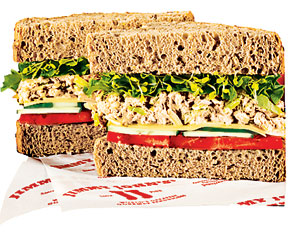
June 30, 2010
Pre-Workout Nutrition
Post-workout nutrition is one of the hottest topics in the fitness field. I’ve discussed this topic in a previous post. But what about before training? Is there anything special you should eat?
The main nutritional goal pre-workout is to supply adequate energy for your muscles and brain during training. This makes carbohydrate consumption essential. Carbs are stored as glycogen in your liver and muscles. Since high intensity exercise utilizes energy at a very fast rate, the body can’t supply enough oxygen to harness fat as a fuel source. Thus, it relies on its glycogen stores, which don’t require oxygen to be broken down for energy.
By taking in carbs before exercise, you ensure that you’re body’s glycogen stores are fully stocked. With a ready supply of glycogen, your muscles can access energy on demand. In this way, you’re able to go all-out in your training efforts, extending performance without “hitting the wall.”

Protein should also be included in your pre-workout meal. Although it doesn’t contribute much in the way of energy, consuming protein prior to exercise has both anabolic and anti-catabolic effects. Recent research has shown that, by providing a steady stream of amino acids at the onset of training, you maximize their delivery to working muscles and thereby attenuate the breakdown of muscle tissue during your workout. Moreover, you significantly increase muscle protein synthesis in the first hour after exercise, priming the body for anabolism.
The consumption of fat, on the other hand, should be kept to a minimum in the pre-exercise period. Fat delays gastric emptying, thereby prolonging the time it takes foods to digest. If food sits in your stomach during exercise, there is an increased likelihood of gastric problems including cramping, nausea and reflux.
For best results, try to consume your pre-workout meal approximately two to three hours before training. Allowing a couple of hours between the end of your meal and the onset of exercise will ensure that the majority of your meal is digested and help to prevent gastric upset. Stick with slow burning carbs and lean sources of protein. Oatmeal and egg whites, tuna on multi-grain bread, lean steak and yams, chicken breast and brown rice are all terrific options. Total calories should be about the same as in one of your “regular” meals. This will provide adequate fuel without bogging down your stomach.
If you aren’t able to consume a full meal in the prescribed timeframe, opt for a piece of fruit within a half-hour of your workout. Due to a high concentration of fructose, fruits are low on the glycemic index. This is significant because it keeps insulin levels stable, thereby preventing the potential for rebound hypoglycemia—a condition that can result in lightheadedness and fatigue. At the same time, fruits provide a valuable source of fuel during exercise, improving your capacity to train.
Ideally, the piece of fruit should be combined with a whey protein drink. Whey is a “fast acting” protein, meaning it’s rapidly absorbed into circulation. This expedites the flow of amino acids to your muscles without having an appreciable impact on digestion. Aim for about one-tenth of a gram of whey per pound of body weight (i.e. a woman weighing 120 pounds would need about 12 grams of whey) mixed in a water-based solution.
The pre-exercise period is also a great time to have a cup of coffee. Caffeine acts on the sympathetic nervous system to increase catecholamine (i.e. epinephrine and norepinephrine) production. Among their diverse functions, catecholamines mobilize fatty acids from adipocytes (i.e. fat cells), allowing them to be utilized for energy. And since exercise increases caloric expenditure, the body can make immediate use of these fatty acids to fuel your muscles. At the very least, it can help to expedite exercise-induced fat loss.
Stay Fit!
Brad
No Comments
No comments yet.
RSS feed for comments on this post.
Sorry, the comment form is closed at this time.





 Entries (RSS)
Entries (RSS)



